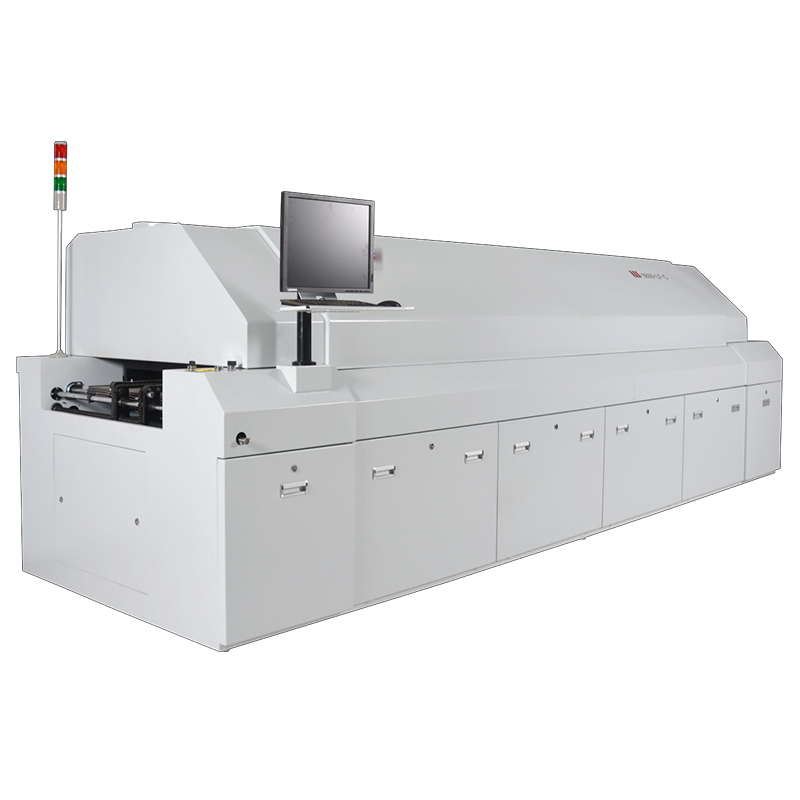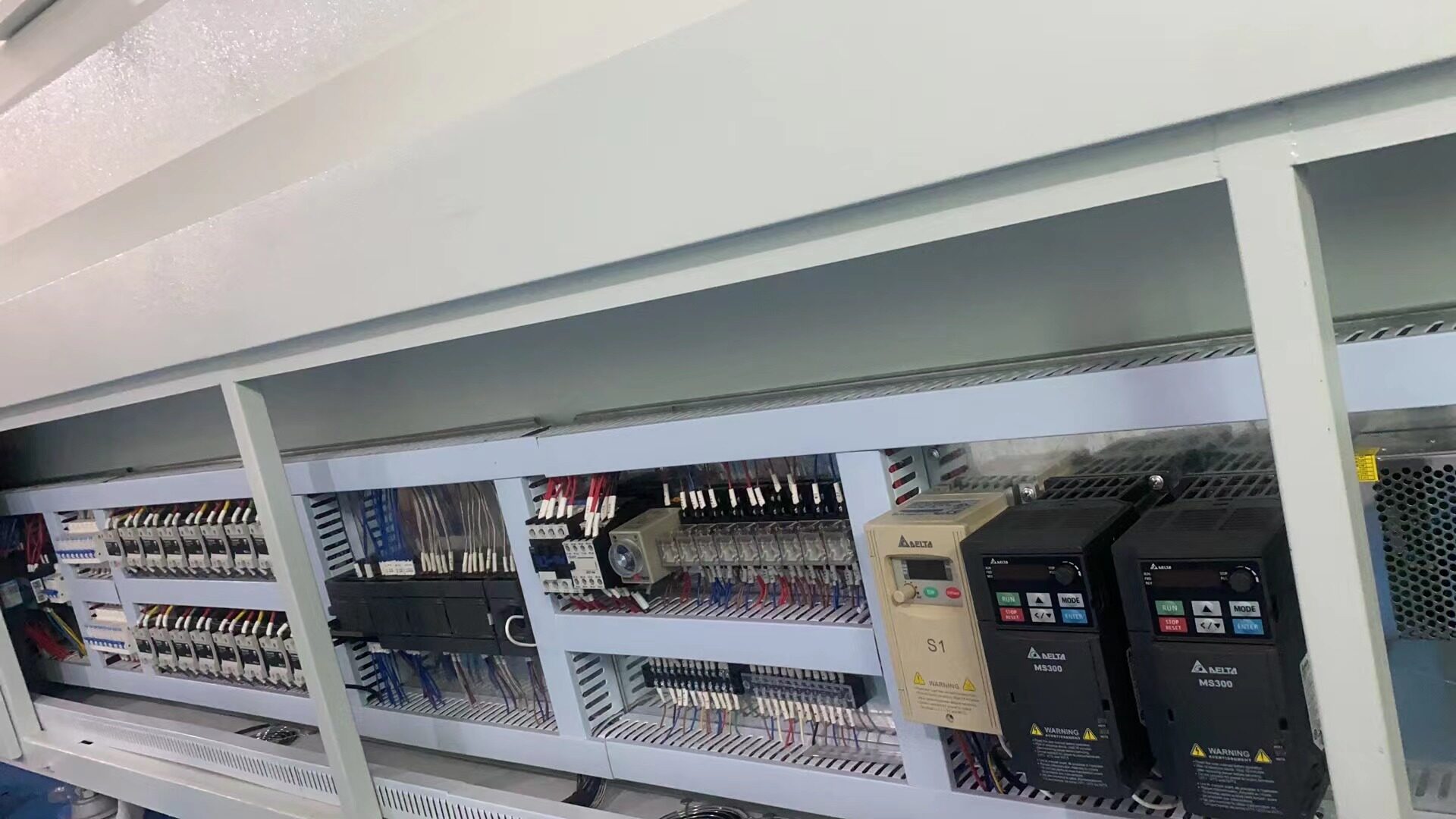이메일 형식 오류
emailCannotEmpty
emailDoesExist
pwdLetterLimtTip
inconsistentPwd
pwdLetterLimtTip
inconsistentPwd


Lead Free Reflow Oven Factory: The Ultimate Guide
The use of lead-free reflow ovens has become increasingly popular due to environmental concerns and regulations in the world of electronics manufacturing. In this blog post, we will explore the benefits of lead-free reflow ovens and take a closer look at how they are manufactured in a lead-free reflow oven factory.
What is a Lead-Free Reflow Oven?
A lead-free reflow oven is a type of oven used in the process of soldering electronic components onto a printed circuit board (PCB). Unlike traditional ovens that use lead-based solder, lead-free reflow ovens use solder that is free of lead, making them more environmentally friendly and compliant with regulations.
Benefits of Lead-Free Reflow Ovens
Lead-free reflow ovens have gained popularity in the electronics manufacturing industry due to their numerous benefits. In this section, we will explore some of the key advantages of using lead-free reflow ovens in the manufacturing process.
○ Environmental Friendliness:
One of the primary benefits of lead-free reflow ovens is their environmental friendliness. Traditional lead-based solder used in electronics manufacturing can have harmful effects on the environment, particularly when disposed of improperly. Lead-free solder, on the other hand, eliminates the use of toxic lead, reducing the environmental impact of electronics manufacturing processes.
○ Compliance with Regulations:
Many countries have strict regulations regarding the use of lead in electronics manufacturing. Lead-free reflow ovens help manufacturers comply with these regulations by using solder that is free of lead. By investing in lead-free reflow ovens, manufacturers can ensure that their products meet regulatory requirements and avoid potential fines or penalties.
○ Improved Soldering Quality:
Lead-free solder used in reflow ovens can provide better soldering quality and reliability compared to lead-based solder. Lead-free solder is known for its high thermal and mechanical performance, resulting in stronger and more durable solder joints. This can lead to improved product quality and reliability, reducing the likelihood of defects or failures in electronic components.
○ Health and Safety:
Lead is a known health hazard, and exposure to lead can have serious health consequences for workers in the electronics manufacturing industry. By using lead-free reflow ovens, manufacturers can create a safer working environment for their employees by eliminating the risk of lead exposure. This helps protect the health and safety of workers and ensures compliance with occupational health and safety regulations.
○ RoHS Compliance:
The Restriction of Hazardous Substances (RoHS) directive restricts the use of certain hazardous substances, including lead, in electrical and electronic equipment. Lead-free reflow ovens are RoHS-compliant, making them an ideal choice for manufacturers looking to produce environmentally friendly and compliant products. By using lead-free reflow ovens, manufacturers can ensure that their products meet RoHS requirements and are safe for consumers to use.
○ Cost Savings:
While the initial investment in lead-free reflow ovens may be higher than traditional ovens, manufacturers can realize cost savings in the long run. Lead-free solder typically has a higher melting point than lead-based solder, which can result in reduced energy consumption during the soldering process. Additionally, the improved soldering quality and reliability of lead-free solder can lead to fewer defects and rework, saving manufacturers time and money in the production process.
○ Market Demand:
As consumers become more environmentally conscious, there is a growing demand for products that are manufactured using sustainable and eco-friendly practices. By using lead-free reflow ovens, manufacturers can meet this demand and differentiate themselves in the market as environmentally responsible companies. This can help attract environmentally conscious consumers and enhance the brand reputation of manufacturers.
Manufacturing Process in a Lead-Free Reflow Oven Factory
The manufacturing process in a lead-free reflow oven factory is a crucial aspect of producing high-quality electronic components. In this section, we will delve into the key steps involved in the manufacturing process in a factory and how these steps contribute to the production of reliable and environmentally friendly products.
- Solder Paste Application: The first step in the manufacturing process in a lead-free reflow oven factory is the application of solder paste to the printed circuit board (PCB). Solder paste is a mixture of solder alloy and flux that is used to attach electronic components to the PCB. The solder paste is applied to the PCB using a stencil or screen printing process, ensuring precise placement and distribution of the solder paste on the board.
- Component Placement: Once the solder paste has been applied to the PCB, electronic components are placed onto the board using automated pick-and-place machines. These machines use vision systems to accurately position the components on the PCB according to the design specifications. Component placement is a critical step in the manufacturing process, as the accuracy and alignment of the components can impact the functionality and reliability of the finished product.
- Reflow Soldering: After the components have been placed on the PCB, the board is passed through a lead-free reflow oven for the soldering process. In the reflow oven, the PCB is subjected to controlled heating and cooling cycles that melt the solder paste, creating strong and reliable solder joints between the components and the board. The lead-free solder used in the reflow oven has a higher melting point than traditional lead-based solder, ensuring that the solder joints are robust and durable.
- Inspection: Once the soldering process is complete, the finished PCBs undergo inspection to ensure quality and reliability. Automated inspection systems are used to detect defects such as misaligned components, insufficient solder paste, or solder bridges. Any defects identified during inspection are addressed through rework or repair processes to ensure that the PCBs meet the required quality standards.
- Packaging: After inspection, the finished PCBs are packaged and prepared for shipment to customers. Packaging is an important step in the manufacturing process, as it protects the PCBs from damage during transportation and storage. Proper packaging also helps maintain the quality and integrity of the products, ensuring that they reach customers in optimal condition.
- Quality Control: Throughout the manufacturing process in a lead-free reflow oven factory, quality control measures are implemented to monitor and maintain the quality of the products. Parameters such as temperature, conveyor speed, and solder paste application are closely monitored to ensure consistent quality and reliability. In addition, finished PCBs are subjected to various tests, such as electrical testing and thermal cycling, to verify their performance and durability.
- Continuous Improvement: Continuous improvement is a key aspect of the manufacturing process in a lead-free reflow oven factory. Feedback from quality control processes and customer feedback is used to identify areas for improvement and implement corrective actions. By continuously striving to enhance processes and product quality, manufacturers can meet the evolving demands of the market and deliver superior products to customers.
Quality Control in a Lead-Free Reflow Oven Factory
Quality control is a critical aspect of the manufacturing process in a lead-free reflow oven factory. In this section, we will explore the key quality control measures implemented in a factory to ensure the production of high-quality and reliable electronic components.
Inspection of Incoming Materials: One of the first steps in quality control in a lead-free reflow oven factory is the inspection of incoming materials. All materials used in the manufacturing process, including solder paste, electronic components, and PCBs, are inspected for quality and compliance with specifications. By ensuring that only high-quality materials are used in the production process, manufacturers can maintain the integrity and reliability of the finished products.
Process Control: Process control is essential for maintaining consistent quality throughout the manufacturing process. Parameters such as temperature, conveyor speed, and solder paste application are closely monitored and controlled to ensure that the soldering process is carried out accurately and efficiently. By maintaining tight control over these parameters, manufacturers can minimize variations and defects in the finished products.
Testing: Finished PCBs are subjected to various tests to verify their performance and reliability. Electrical testing is commonly used to check the functionality of the components and circuits on the board. Thermal cycling tests are also performed to assess the durability of the solder joints under different temperature conditions. These tests help identify any defects or weaknesses in the products and ensure that they meet the required quality standards.
Inspection and Rework: Automated inspection systems are used to detect defects in the finished PCBs, such as misaligned components, insufficient solder paste, or solder bridges. Any defects identified during inspection are addressed through rework or repair processes to correct the issues and ensure that the products meet the required quality standards. Inspection and rework are essential steps in quality control to prevent defective products from reaching customers.
Documentation and Traceability: Documentation and traceability are important aspects of quality control in a lead-free reflow oven factory. Detailed records of the manufacturing process, including materials used, process parameters, test results, and inspection findings, are maintained to ensure traceability and accountability. This documentation helps manufacturers track the quality of their products, identify areas for improvement, and address any quality issues that may arise.
Continuous Improvement: Continuous improvement is a fundamental principle of quality control in a lead-free reflow oven factory. Feedback from quality control processes, customer feedback, and performance metrics are used to identify areas for improvement and implement corrective actions. By continuously striving to enhance processes, address quality issues, and optimize performance, manufacturers can achieve higher levels of quality and customer satisfaction.
Conclusion
Lead-free reflow ovens offer numerous benefits for electronics manufacturers, including environmental friendliness, compliance with regulations, improved soldering quality, and enhanced health and safety. Understanding the manufacturing process in a lead-free reflow oven factory and the importance of quality control is essential for ensuring the production of high-quality PCBs. By investing in lead-free reflow ovens and implementing robust quality control measures, electronics manufacturers can stay ahead of the curve and meet the demands of an increasingly environmentally conscious market.

